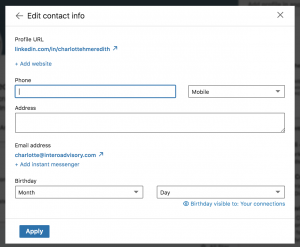Statistics from eMarketer project that ecommerce sales in the United States will exceed $ 1 trillion by 2024, representing 18.1 percent of total retail sales in the country by that time.
Perhaps you’ve noticed an uptick in your business too, or you anticipate one happening soon.
Here are seven tips for ensuring you’ll continue to keep customers happy as your online business scales up:
Tips for Improving Your Ecommerce Business As Demands Increase
1. Investigate How to Accelerate the Checkout Process.
Many shoppers become frustrated if ecommerce stores require them to enter details repeatedly.
As people type information like their address and telephone number, the likelihood goes up that they may make mistakes that ultimately slow down the order fulfillment process and cause hassles for your company and shipping partners.
One possibility is to invite people to create accounts at your site. Emphasize how doing that saves time for them and could help them choose the products they want faster.
For example, a registered user might frequently buy a certain kind of cat food from a pet website. Their account could allow clicking a reorder button rather than going through the process of finding the item, adding it to a cart, and checking out.
Other companies want to take things even further. Fast — a San Francisco startup that recently completed a $ 20 million Series A round — uses tokenization technology to bring a one-click checkout option to ecommerce sites across the internet. People can go to Fast-supported websites and purchase things without entering information at each one.
2. Provide Live Tracking Links for Customers.
People understandably want to know when they can expect their orders. You can meet that need by giving them a link that allows tracking orders as the shipped items move through the various stages.
Taking this approach lets your customer service team avoid dealing with jumps in order queries that customers could answer for themselves if you provided the information to facilitate self-service.
If you give links to customers, clarify when they will begin showing accurate statuses. For example, hours often pass between the time a merchant distributes a link and when it reflects a person’s order.
Mention something like, “You can see live tracking details here after 6 p.m. Eastern time this evening.” You’ll then avoid upsetting people who think the links don’t work or that their transactions did not go through.
3. Show Accurate Stock Levels on Your Website.
Ecommerce customers often act faster if they see that the products they want to buy are almost gone. If people perceive that your store has plenty of the products they want and need, many will delay their purchases and end up disappointed.
Showing stock quantities on your website is especially useful as your overall demand grows, or if it typically fluctuates depending on the season or other factors.
It’s ideal to sync what the website displays with your company’s inventory data so it changes in real time. That option helps people who need to buy in bulk and those who merely want to make sure they get their orders in before it’s too late.
You can also tweak the website to say less-specific things that should nevertheless prompt customers to act. Some examples include “almost gone,” “limited quantities,” or “selling fast.”
4. Use Data to Make Customer Forecasts.
Customer buying patterns can change before you notice the shift. There have probably been at least a few times where a surge in demand for a product left you scrambling to fulfill order requests.
Those circumstances happen, but you can make them less frequent by tapping into historical data. Taking that approach enables a reduced dependence on stockpiling and better preparedness for meeting needs.
You can start by looking for patterns in data that could aid in making smarter plans. It’s not always easy to detect those, but doing so becomes much more straightforward if you have a data analysis platform. Strongly consider investing in one if your budget allows.
It’s also possible to get a more accurate picture of customers’ future needs by asking other people at your company to let you know if they notice notable trends.
For example, if you have a few solid months of data showing a particular product sold at higher-than-average quantities in the Midwest, that may mean you need to keep more on hand to accommodate that change.
5. Considering Bringing Automation to the Packaging Process.
Achieving more efficiency with packaging is essential for a growing ecommerce brand. If the goods take too long to leave your premises due to slow processes or frequent mistakes, people may lose patience and go elsewhere.
Automation is an excellent way to speed up your packaging strategy and make it more accurate. Moreover, the upfront investment may not be as significant as you expect.
For example, the machine-as-a-service (MaaS) model lets you use a pay-as-you-go plan instead of purchasing equipment.
The vendor maintains ownership, but your company gets the same benefits as if you’d bought the product. Many vendors handle maintenance and repairs as part of your cost, too.
6. Suggest Alternatives for Sold-Out Products.
Seeing that an ecommerce store does not have a desired product in stock is a disappointing experience that often causes visitors to immediately look for the unavailable items elsewhere. That means you could lose out on customers due to rising demand.
However, you can encourage customers to still do business with you even when your company doesn’t meet their exact needs.
Urge them to try something new that you can offer. Show similar products directly below the sold-out indicators for the goods they want. People are then more likely to get interested before clicking away.
You can also use information such as star ratings and customer-submitted reviews. If consumers see that others felt satisfied by different products, they’ll feel more confident about trying them too.
7. Ask Customers How You Could Do Better.
As you deal with the changing demands of a growing ecommerce company, it’s natural to make some educated guesses about how to keep customers pleased and loyal. However, it’s best to back up your assumptions with real feedback from the people who buy from you.
Their responses may unlock areas of improvement you previously overlooked or highlight issues with things you thought were going smoothly. Requesting feedback also assures customers that you care about doing better and value their input.
Design your survey questions carefully to increase the percentage of people who respond. For example, open-ended questions help you get valuable details, but they take longer to complete.
Aim to strike a balance so that the questions target the things you want to know most, but don’t make people feel bored or annoyed by the time commitment.
Position Yourself as Prepared for Marketplace Changes
These seven tips demonstrate that your ecommerce company can respond to variations in demand without sacrificing customer service commitment.
Using them during growth periods could help you succeed while avoiding pitfalls.
Digital & Social Articles on Business 2 Community
(35)







